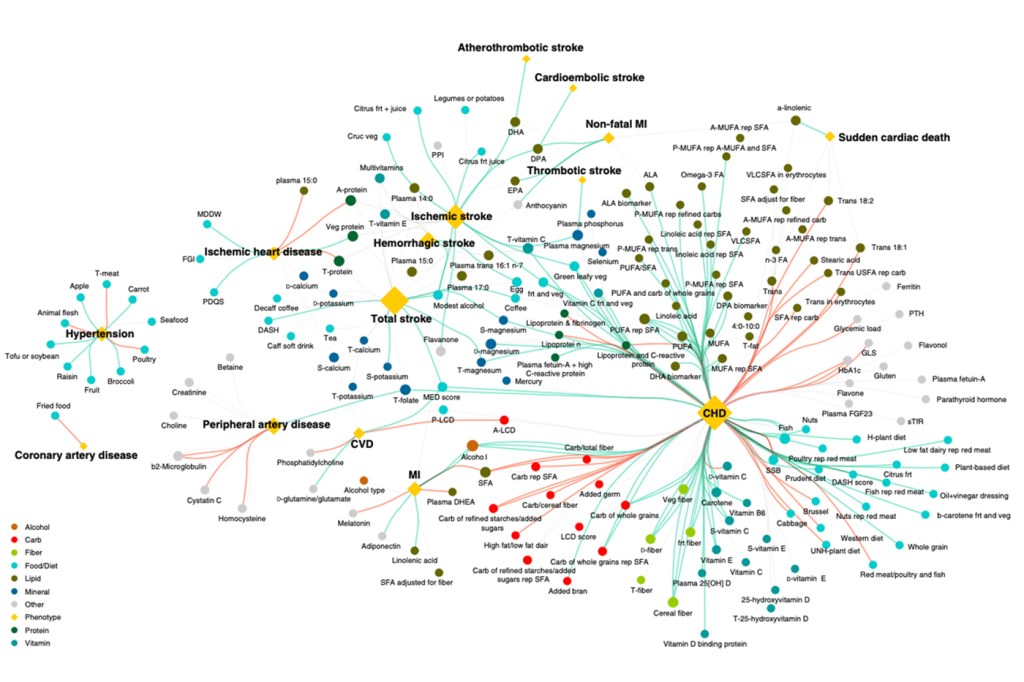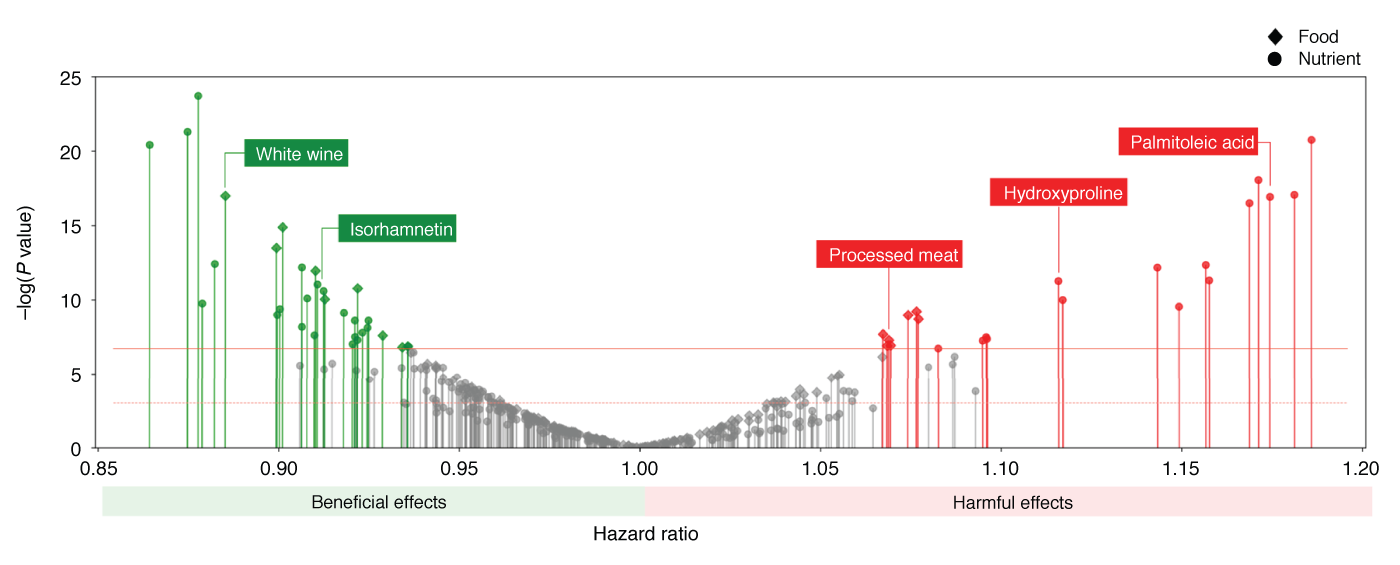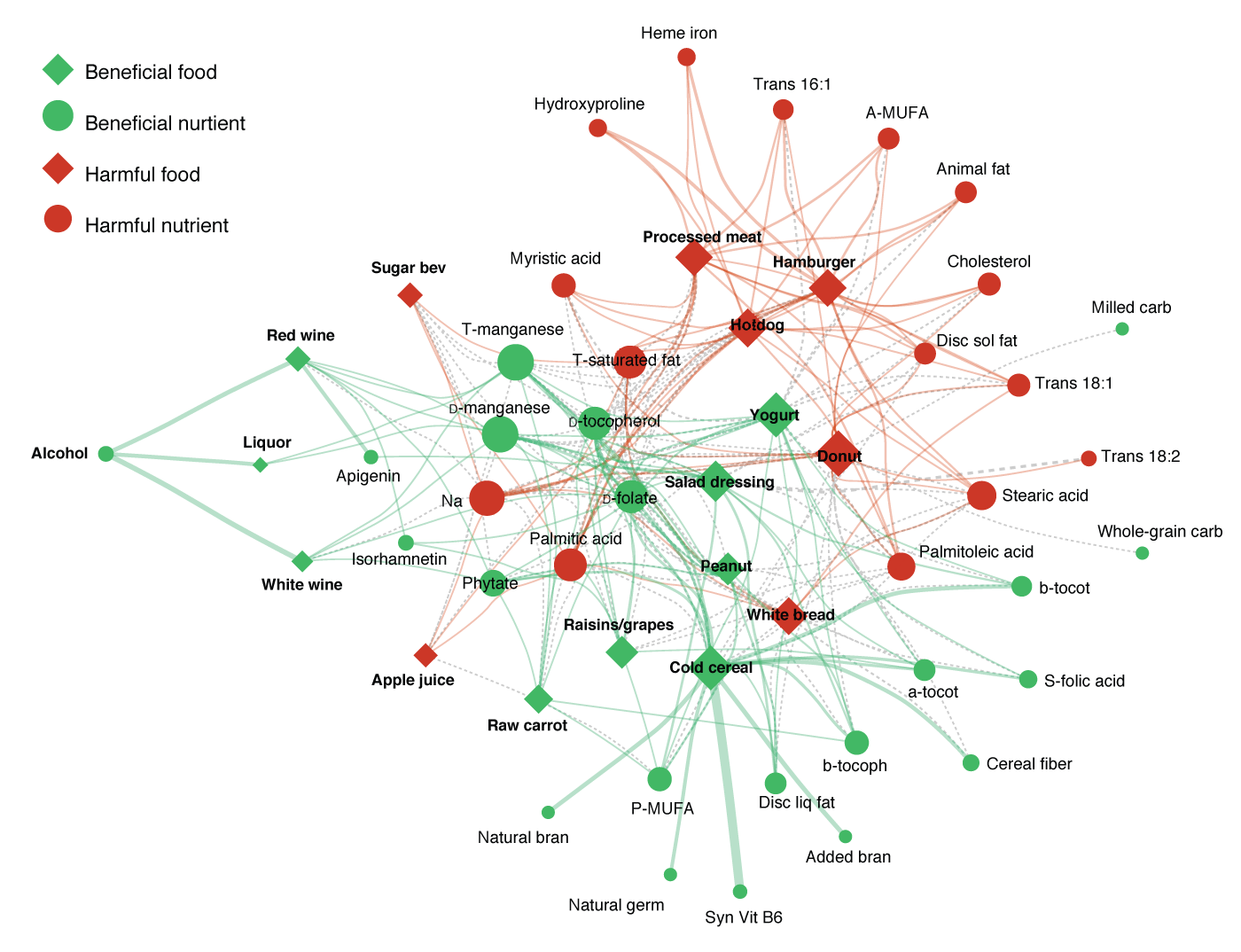New research provides a map to start 2021 in a heart-healthy way

If you’re making resolutions for 2021, why not make one that’s good for your heart?
A new study by researchers from Northeastern University, Harvard University, and Brigham and Women’s Hospital shows that certain foods—including wine, yogurt, carrots, peanuts, breakfast cereal, grapes, and raisins—are associated with a lower risk of developing coronary heart disease.

Left to right: Soodabeh Milanlouei, a graduate student in industrial engineering, Albert-László Barabási, Robert Gray Dodge Professor of Network Science and University Distinguished Professor of physics and Giulia Menichetti, an associate research scientist at Northeastern’s Center for Complex Network Research. Photos by Adam Glanzman and Matthew Modoono/Northeastern University
The researchers also found several foods that were associated with an increased risk of developing heart disease, including processed meat, doughnuts, and white bread.
“Diet-induced diseases are the largest source of death in the U.S.,” says Albert-László Barabási, Robert Gray Dodge Professor of Network Science and university distinguished professor of physics at Northeastern, and one of the researchers in the study.
“It is crucial, therefore, to bring new tools to gain insights into the nutrients and the foods that have an adverse effect on health,” he says.
Everything we eat, from yogurt to doughnuts, contains thousands of different chemical compounds that could affect our health. Barabási and his colleagues—including Giulia Menichetti and Soodabeh Milanlouei, researchers at Northeastern’s Center for Complex Network Research—have been painstakingly identifying and tracking these chemical compounds in our foods.

Everything we eat, from yogurt to doughnuts, contains thousands of different chemical compounds that could affect our health. Data visualization by Albert-László Barabási, BarabasiLab 2020.
Last year, they documented more than 2,000 chemical compounds in garlic alone, 485 of which are still unquantified in food composition databases, despite their potential health effects.
But we don’t eat these chemical compounds in a vacuum, Menichetti says. If we’re mincing garlic to add to an aioli, we’re ultimately eating all the chemicals in garlic at once, plus those found in the other ingredients, such as egg yolk and lemon juice, and their byproducts. And those nutrients—some of which may be found in several different foods—may have different effects on our health, depending on where they come from and the foods in which they’re eaten, she says.

They explored the association of 257 nutrients and 117 foods with coronary heart disease using data from the Nurses’ Health Study, a national survey that followed the eating patterns and health outcomes of roughly 63,000 women over 30 years. Courtesy image.
So for this study, Menichetti, Milanlouei, Barabási, and their teammates—Yanping Li and Walter C. Willett from Harvard University, and Joseph Loscalzo from Brigham and Women’s Hospital— wielded the power of big data and computation to study the health consequences of foods and nutrients all at once.
They explored the association of 257 nutrients and 117 foods with coronary heart disease using data from the Nurses’ Health Study, a national survey that followed the eating patterns and health outcomes of roughly 63,000 women over 30 years. The survey is currently in its third iteration and among the largest of such investigations. Menichetti describes it as “the gold standard for epidemiological studies.”
The researchers screened the foods and nutrients against health consequences to search for statistically significant correlations. Sixteen foods and 37 nutrients showed strong correlations—some of which were associated with a higher risk of developing coronary heart disease and some with a lower risk.
Their analysis revealed that some nutrients, such as whole grain carbohydrates and milled whole grain carbohydrates, had different risk factors depending on the foods in which they were found.
“Our network analysis reveals how for most of the nutrients, the structure of the food system determines the amount of nutrients in the diet, while for some other nutrients individual choices drive the nutrient amount in the diet, as in case of Myristic acid and trans-fatty acid 18:2”, Menichetti says.
“Our assessment gives some responsibility to the composition of our food supply. We can educate people to have better diets, but we also have to improve the food supply itself.”
The researchers expect that this study will blaze the trail for future investigations into the complex relationship between food and health. Still, they acknowledge several limitations in their work. First, the Nurses’ Health Study is composed only of women who are nurses. Second, the study focused strictly on the relationship between diet and heart disease, without consideration for the rest of the environment in which a person lives.
Still, the new findings reveal a “tangible effect” of a person’s diet on their heart health, Milanlouei says.
And the results are already changing some people’s behavior—Menichetti says the doctoral students working in Barabási’s lab have made “drastic changes” to their diets as a result of this work.
“Way less processed food,” she says. “A lot of people have started cooking with fresh foods again.”
For media inquiries, please contact Marirose Sartoretto at m.sartoretto@northeastern.edu or 617-373-5718.





